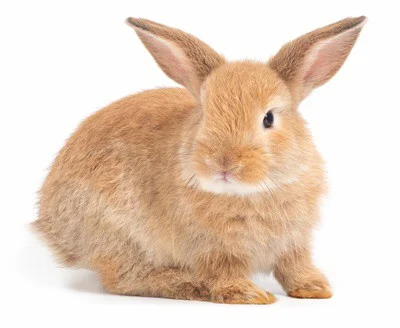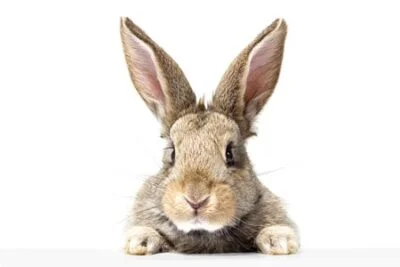Fictional rabbits are regularly depicted as having pads on their paws, whether it be in cartoons or children’s book illustrations. And while we often do not bat an eye at these erroneous portrayals of rabbits, these incorrect assumptions can be harmful to real-life rabbits.
Rabbits do not have paw pads because their feet were built for strength and durability rather than speed. Instead, a rabbit’s feet are cushioned and protected by a layer of thick fur. The shorter this cushioning of fur, the more vulnerable rabbits are to conditions, such as pododermatitis.
Because most people do not know about this physical quirk, people often mistake other things for a rabbit’s paw pad. A sock hop, which is an inflammation of the feet, is often mistaken for a paw pad in rabbits.
Do Rabbits Have Paw Pads?
Mammals share traits in their anatomy, one of which is paws. All mammals have their own paws, with each paw varying from one animal to another. These variations are due to how animals are created. Cat paws are designed for stealth and dog paws are designed for speed, for example.
But perhaps one of the biggest variations in paws in mammalian anatomy is that of rabbits. In fact, rabbits are the only mammal species that do not have paw pads.
With some animals with three different types, this truly makes the rabbit paw unique. Despite this, the lack of paw pads isn’t common knowledge, even for those who own and raise rabbits.
What Is The Function of Paw Pads?
Paws are the soft, clawed part of the foot that is used for locomotion and can be found in mammals. Specifically, they refer to the thin, pigmented, hairless part of the foot.
The paw covers collagenous and adipose tissue, just below the skin. This tissue also makes up the paw pad. Paws are made up of two main paw pads, four digital pads for most mammals, a carpal pad, and a declaw.
Paw pads take up a lot of space on a paw, but what exactly is its purpose? Also known as footpads, a paw pad’s main purpose is to cushion the foot. To do this, paw pads are filled with fatty tissues that absorb shock.
Because the foot bears the full load of the animal, pads are there to protect the surface of the foot against surfaces it comes into contact with. This allows the animal to run against rough surfaces, while lessening the chances of injury.
In that regard, paw pads are also there to increase speed. Because it allows an animal to run through rough terrain at high speeds, paw pads also allow an animal to gain traction.
A paw pad can also serve a more specific purpose. For cats, the shock absorption of paw pads also allows them to be stealthy. Since noise is also absorbed by their paw pads, cats are able to move silently and undetected.
Why Rabbits Don’t Have Paw Pads
There are variations from one mammalian paw pad to another. But rabbits completely do away with paw pads. Instead, rabbit paws only consist of a thick fur pad. However, rabbits still do have the claws covered by the paw, located underneath their fur and skin.
Rabbits have evolved for specific purposes. For rabbits, this meant doing away with paw pads entirely. This lack of paw pads may be because of how the rabbit moves.
Animals stand, run, or walk in two major forms: plantigrade, and digitigrade. Rabbits take on both forms, but most important, take on a digitigrade form when running. Digitigrade refers to a form wherein an animal walks on its toes.
It should be noted that other digitigrade animals, like cats and hyenas, do have paw pads. However, it is possible that switching out pads for fur can increase a rabbit’s agility and mobility.

Thick Fur Pads on The Feet
Rabbits still need the cushioning that paw pads provide, however. To still have cushioning, rabbits instead use thick fur pads. These are compressed coarse hair that covers the pad. This coarse hair can be found under the toes and the hock, or the underside of the rabbit’s foot.
While this fur pad does provide cushioning to the foot, there are some problems that come with these fur pads.
Sore Hocks in Rabbits
One of the common ailments that rabbits have is sore hocks. In fact, sore hocks are so common that some owners may mistake them for paw pads. Since the lack of paw pads in rabbits isn’t a well-known fact, sore hocks are sometimes left untreated, leading to more damage.
Medically referred to as ulcerative pododermatitis, sock hops refer to a condition wherein a rabbit’s foot becomes raw and inflamed. This is due to the constant friction that rough surfaces have on the paw. In other animals, like chickens, this condition is commonly referred to as bumblefoot.
While the sore hock itself is not a problem, sore hocks can lead to infections. Rabbit’s feet are an easy site to infect as it often comes in contact with bacteria from fecal matter, urine, and bacteria in the soil. This risk for infection is the reason why sore hocks should be treated as soon as possible, and measures should be taken to prevent it.
Rabbits with sore hocks often avoid putting weight on the affected foot. Rabbits will tend to move less, and slower if they move at all. Because of this, a rabbit with a sore hock may also avoid any other activities, like playing and eating, and would rather sit down and not move.
Sore Hock Stages
Other than behavioral symptoms, there are also physical symptoms to sore hocks. Sore hocks occur in three stages, with one stage growing worse when left untreated. The stages of sore hocks are the following:
Bald Patches on The Underside of Feet
Bald patches are the first stage of sore hocks. When left untreated, these bald patches will worsen to create a wound on the skin, which can then become inflamed.
These bald patches can often be seen as a rounded, pink area. It will more commonly appear on the hind legs. If you notice this on your rabbit’s feet, make sure to pad any rough surfaces. Keep an eye on these bald patches to make sure they don’t become worse.
Inflamed Patches
If unaddressed, bald patches will become inflamed, damaging the exposed skin. Inflammation often means that you caught the sore hock early. At this point it is necessary to contact your vet to properly cushion the foot.
Raw Sores on Feet
When the inflammation is not addressed, the skin will become infected. For particularly bad infections, this can include bleeding and even abscess.
In some cases, ulcers can develop, as observed in Preventive Veterinary Medicine. Bacterial infections need to be addressed as soon as possible. If left unattended, infections can affect other areas, like tendons and bones.
Sore Hock Causes
Sore hocks are a common ailment in rabbits as there are many reasons why a rabbit can develop them. Here are some reasons why a rabbit can develop sore hocks.
Improper Flooring
Perhaps the most common reasons for sore hocks, improper flooring refers to rough flooring on surfaces that your rabbit often runs or stands on. To avoid sore hocks, rabbits should be provided with soft, padded flooring. Ideally, this flooring should mimic the natural texture of the earth.
This is also the reason why rabbits should never be kept in wire cages. Wire flooring is not only rough on a rabbit’s feet, but it also does not provide adequate support.
Obesity
Paws bear the brunt of an animal’s weight, and paw pads help with this function. Without paw pads, rabbits are susceptible to damaging their paws due to too much weight.
Likewise, obesity can also cause a rabbit to hold their position in an unnatural manner, causing pressure on some parts of the paw. A proper diet should be followed in order to avoid obesity and the sore hocks it may eventually cause.
Skeletal Problems
Aside from obesity, skeletal deformities, like arthritis, can also cause an unnatural posture. Because of the lack of foot pads, breeds with fine, short hair are more at risk for developing sore hocks.
With shorter and finer fur, there is less fur that covers the underside of their paw. Examples of these breeds include rex rabbit and holland lops.
How To Prevent Sore Hocks
Despite the fact that sore hocks are a common ailment, there are still some things you can do to prevent it from happening.
One of the most common reasons why rabbits develop sore hocks is because of improper flooring. According to a study presented in the 10th World Rabbit Congress, rabbits housed in a large cage with a wire mesh developed sore hocks more often and more severely. This is compared to a group of rabbits who were housed in a cage with a plastic platform.
To lessen the chances of sore hocks, avoid a wire mesh floor. Instead, cover the flooring of your rabbit with a thick layer of hay, and make sure to keep it clean.
While we don’t often think about our rabbit’s paws, the misconceptions we have about them can put their health at risk. People often mistake sore hocks for paw pads. However, sore hocks are a common, but potentially damaging ailment that all owners should keep an eye on.

